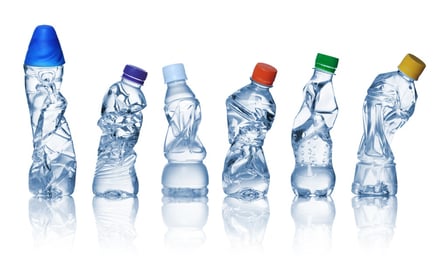When it comes to plastic, times have certainly changed. While 40 years ago anything made with plastic was considered cheap. Today there are thousands of plastic products, including things like computer housings, automobile parts, and medical parts.
Plastic has been around since 1869, when John Wesley Hyatt invented it from plant material cellulose used from tree pulp. Hyatt used his plastic to make eyeglass frames, combs, billiard balls, shirt collars, dentures, buttons, and photographic film. In 1951, two research chemists from Phillips Petroleum discovered two new kinds of plastics: polypropylene and polyethylene. Thier discovery revolutionized the plastics world. Now, people use Polypropylene and Polyethylene in thousands of plastic products around the world.
The journey petroleum takes to become a plastic product is fascinating. There are 8 different steps it takes for petroleum to become plastic.
- First, the petroleum is drilled and transported to a refinery.
- Crude oil and natural gas are refined into ethane, propane, and hundreds of other petrochemical products. Of course, fuel for your car is refined through crude oil.
- Ethane and propane are "cracked" into ethylene and propylene, using high-temperature furnaces.
- A catalyst is combined with ethylene or propylene in a reactor, resulting in "fluff." Fluff is a powdered material (polymer) resembling laundry detergent.
- Fluff is combined with additives in a continuous blender.
- The polymer is fed to an extruder where it is melted.
- Melted plastic is cooled then fed to a pelletizer that cuts the product into small pellets.
- Pellets are then shipped to customers and manufacturers.
We are still coming up with new ways to source plastic. PLA, or Polylactic Acid, is now used, usually sourced from corn. PLA is a considered a green material and is created using starch from renewable energy resources (corn). Unrefined dextrose is processed from starch, and then the dextrose is fermented into lactic acid. Lactide is produced through condensation and then purified by vacuum distillation. This creates a solvent-free melt polymerization.

PLA can also be easier broken down, and is fully combustible in composting facilities. It can be converted back to monomer, or completely broken down to H20, CO2, and organics. Degradation time takes from weeks to months.
Products made from PLA include:
- Serviceware
- Bottles
- Rigid Containers
- Flexible, Films & Coatings
- Consumer Goods
- Nonwovens
- Home & Office Textile
- Apparel
So, what can you get from one bushel (56 Lbs) of corn?
A total of 1.6 pounds of corn oil, cooking oil, margarine, salad dressing, shortening, soups printing ink, soap; 13.5 Lbs, or 21 percent protein, gluten feed, livestock and poultry feed, pet food; and 2.6 Lbs, or 60 percent protein, of gluten meal amino acids, and fur cleaner.
Or, you can get:
- 32 Lbs of Starch - adhesives, batteries, cardboard, crayons, plywood, paper, antibiotics, chewing gum.
- 33 Lbs of sweetener - shoe polish, soft drinks and juices, jams and jellies, canned fruit, cereal, peanut butter, catsup, marshmallows
- 2.7 gallons of ethanol/alcohol - motor fuel additive, alcoholic beverages, industrial alcohol.
- 22.4 pounds of INGEO biopolymer.
The discoveries made by Hogan and Banks have changed the way the world views and uses plastic today. Plastic went from being a “cheap” product to being used to produce most of our everyday products.


